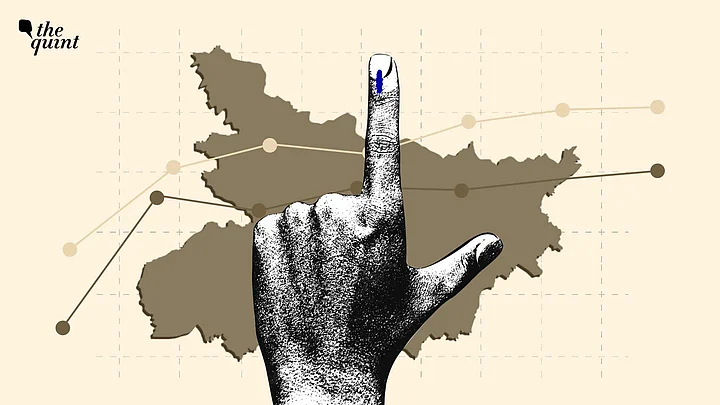In a state where elections are largely and inherently skewed around caste politics, it appears that even the fiscal understanding of political parties regarding existing state debt and the challenges of running welfare schemes is limited.
Or, perhaps, they understand that voters respond more to hearing promises of welfare and benefits, which is music to their ears, rather than the harsh realities of Bihar’s current debt situation.
As Bihar gears up for the 2025 Assembly elections, the campaign narrative is dominated by promises of welfare, cash transfers, and job guarantees. The Rashtriya Janata Dal's (RJD) headlining promise of one government job per family, the National Democratic Alliance's (NDA) massive pre-poll Direct Benefit Transfer (DBT) to women under schemes like the Mukhyamantri Mahila Rojgar Yojana, and Jan Suraaj’s Parivar Labh Cards illustrate a war of welfare schemes aimed at courting voters across the socio-economic spectrum.
Yet, beneath the glittering announcements lies a stark reality: Bihar’s fiscal health is fragile, and its capacity to deliver these promises sustainably is constrained by structural economic weaknesses.
The Fiscal Underbelly of Welfare Promises
The Opposition party, RJD, has made employment the centrepiece of its electoral appeal, pledging a government job for every family. While politically resonant, this pledge raises serious questions about fiscal feasibility. Independent estimates suggest that implementing such a scheme could require expenditure running into several lakh crore rupees over the next few years, a scale unprecedented for a state like Bihar. The ruling NDA coalition has relied on more immediate instruments; the direct benefit transfers under the Mukhyamantri Mahila Rojgar Yojana have been in the news recently.
This cash infusion is intended to empower women for self-employment or small-scale entrepreneurship. This is one among many recent schemes and public service launches around the election that the state has seen in recent times.
Adding a new dimension to the welfare politics is Prashant Kishor’s Jan Suraaj party. Through the Parivar Labh Card, the party has sought to systematise promises, ranging from pensions to youth employment and low-interest loans for women, into a tangible voter-facing artifact. The card, distributed freely to over a crore residents, symbolically assures citizens that the party intends to deliver if it forms government.
However, like RJD’s job promises, these remain aspirational; the operational details, timelines, and financing mechanisms are still largely undefined.
His focus on stopping youth migration from Bihar raises additional questions: first, migration of educated youth is not inherently negative, as remittances can significantly benefit both families and the state’s economy; second, there is little discussion of what these youth will actually do if they stay, given the scale of employment opportunities that would need to be generated almost overnight.
New Symptoms, Deeper Rots
Bihar’s reliance on transfers is symptomatic of a deeper structural issue: its economic base is heavily skewed toward agriculture and low-value services. Manufacturing and high-productivity service industries, which provide reliable revenue streams for other states, are underdeveloped.
As a result, the state’s fiscal flexibility is limited. Debt-to-GSDP ratios hover around 35-40 percent, higher than Tamil Nadu and Telangana, both of which enjoy more robust industrial and service sectors.
Even these comparatively richer states are struggling to finance all pledged welfare schemes without resorting to borrowing or delaying payments, highlighting that fiscal promises cannot outrun economic fundamentals.
Telangana offers a cautionary tale. Despite having a comparatively strong IT, pharmaceutical, and manufacturing base, the state is facing difficulties in timely disbursing certain welfare schemes, underscoring that even a diversified economy cannot insulate governments from fiscal mismanagement or over-commitment. Bihar, lacking such a strong revenue-generating base, risks a far more precarious situation if current political rhetoric around universal jobs, large cash transfers, and ambitious welfare promises continues unchecked.
What Bihar politics must learn is clear: welfare promises must be grounded in economic reality.
The Scourge of Populism
Political parties should focus on phased, targeted, and fiscally sustainable interventions rather than headline-grabbing universal schemes. Moreover, political discourse should shift from populist optics to structural reforms. Skill development, vocational training, and the creation of an enabling environment for small and medium-sized enterprises, as well as the service and manufacturing industries, can generate employment organically, rather than relying solely on government job creation and direct fund transfer.
Bihar stands at a critical crossroads. The 2025 assembly elections will likely continue to see a high-stakes competition of welfare promises.
Yet, without recognising the state’s fiscal constraints and the structural limitations of its economy, these promises risk remaining aspirational, or worse, financially destabilising. Learning from the experiences of states like Telangana and Tamil Nadu, Bihar must prioritise sustainable economic growth alongside social welfare. Only by marrying ambitious social objectives with fiscal realism can Bihar hope to deliver meaningful development without mortgaging its financial future.
(Sharique Hassan Manazir is Assistant Professor of Public Policy at the Kautilya School of Public Policy, Hyderabad. This is an opinion piece. All views expressed are the author’s own. The Quint neither endorses nor is responsible for them.)
